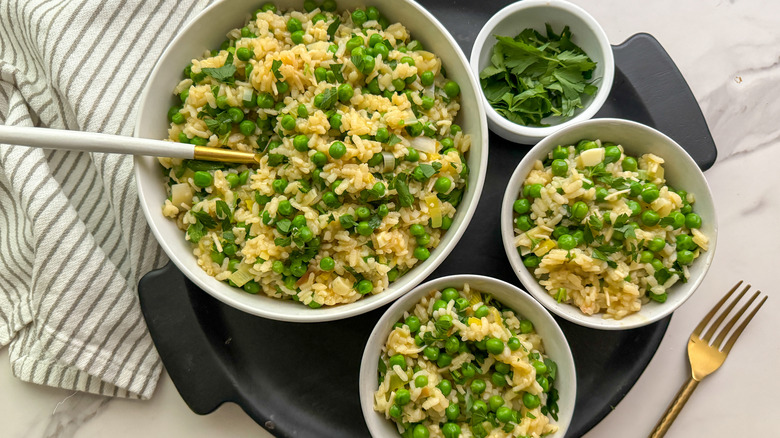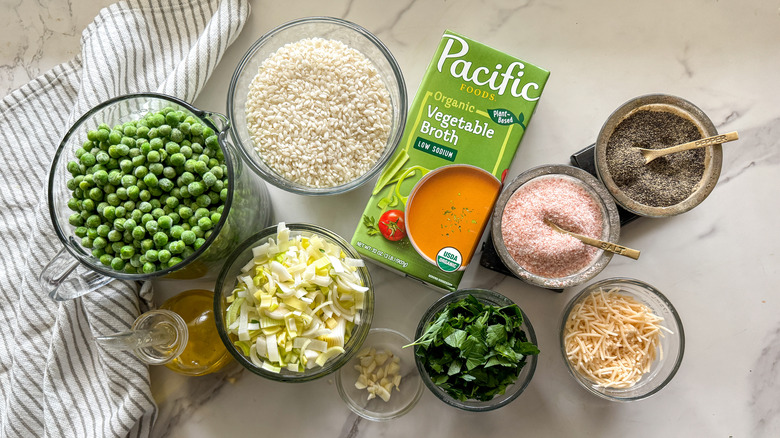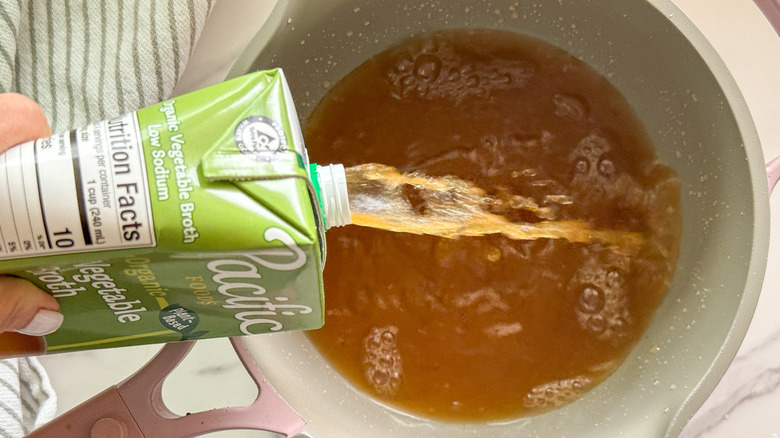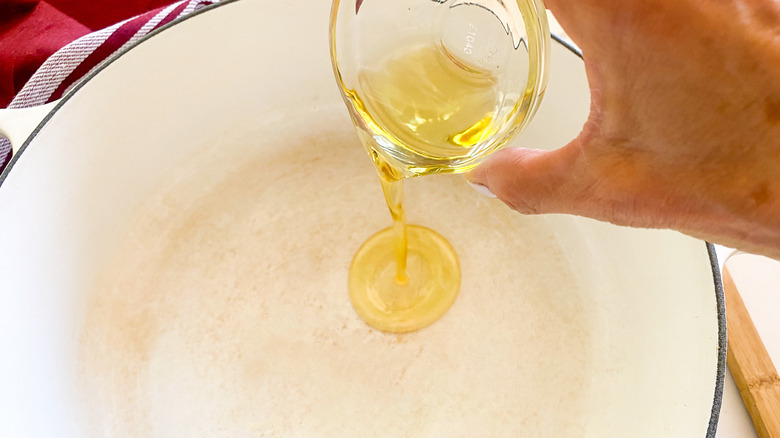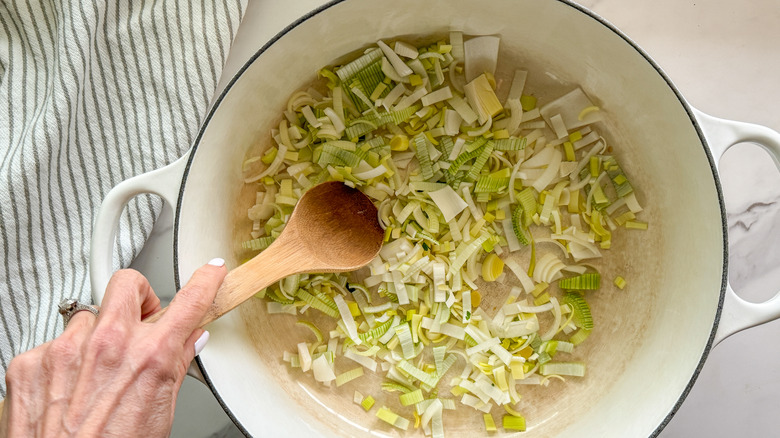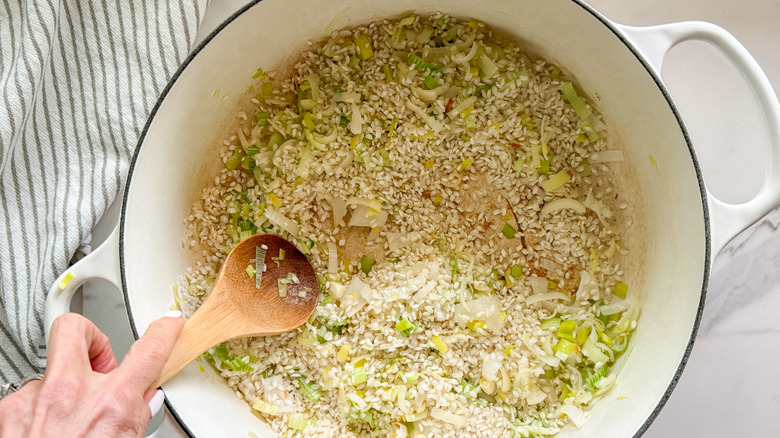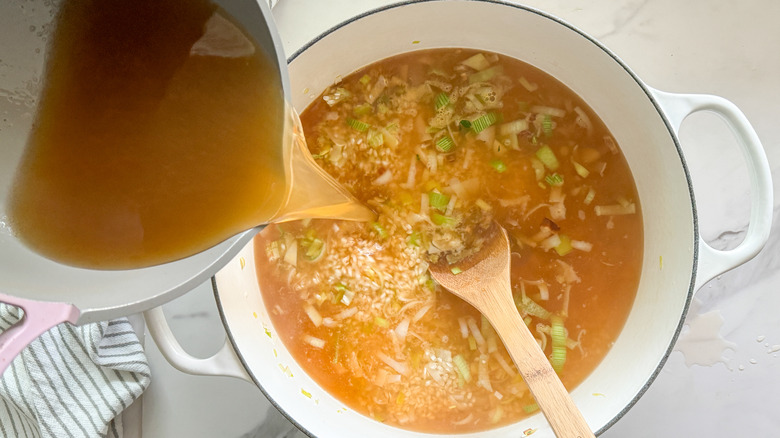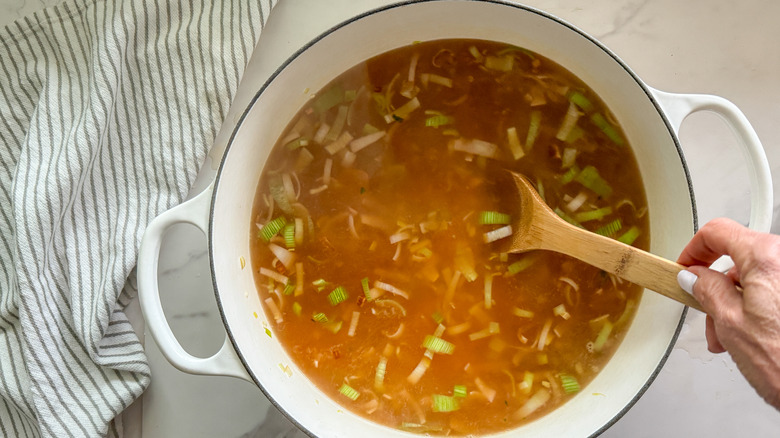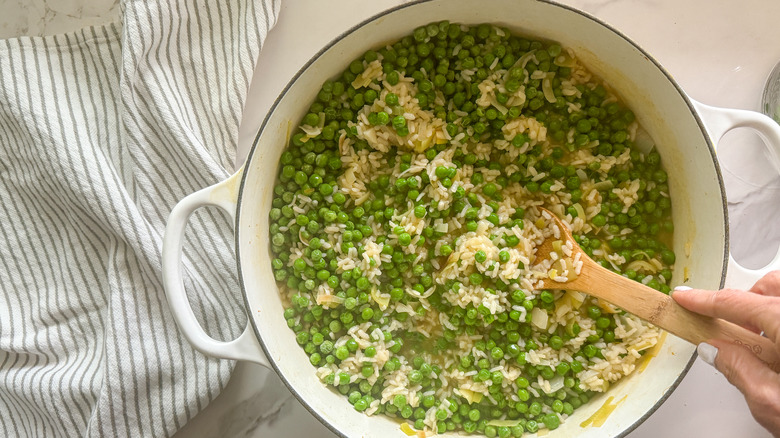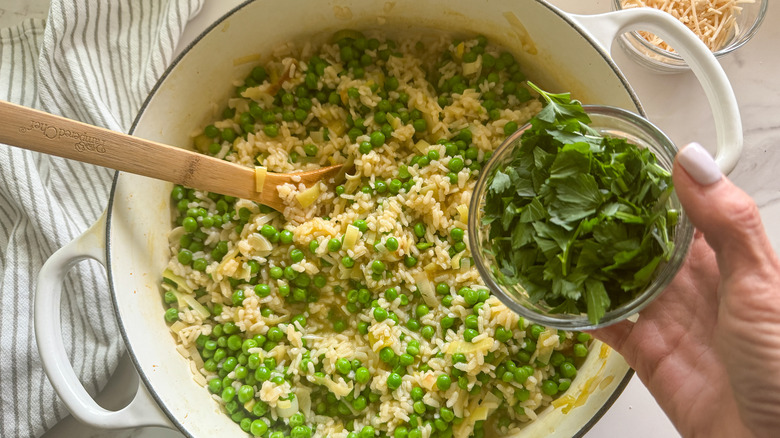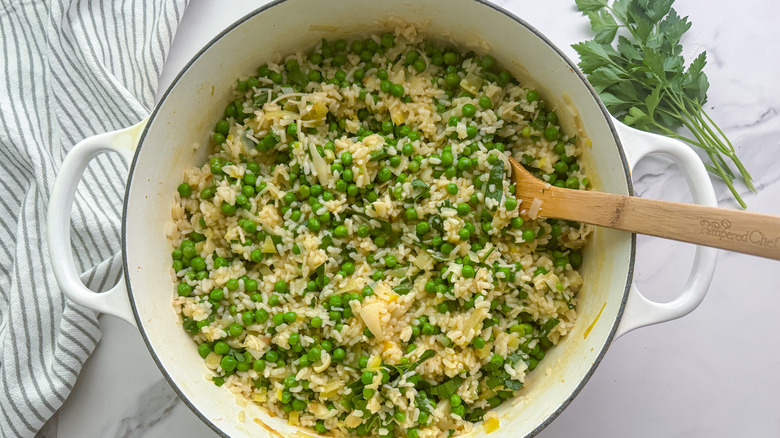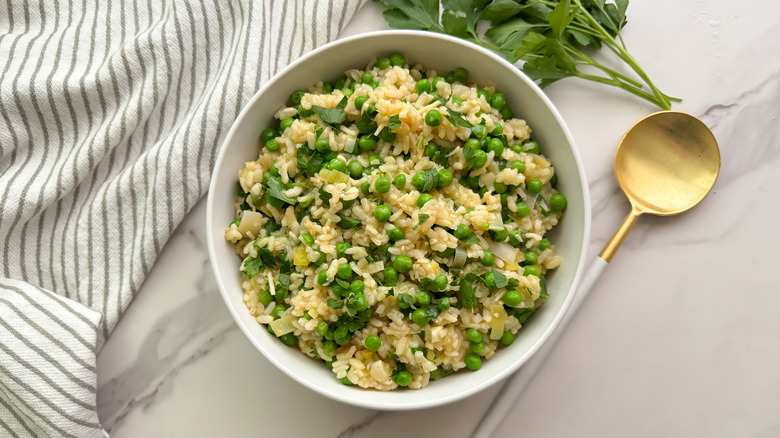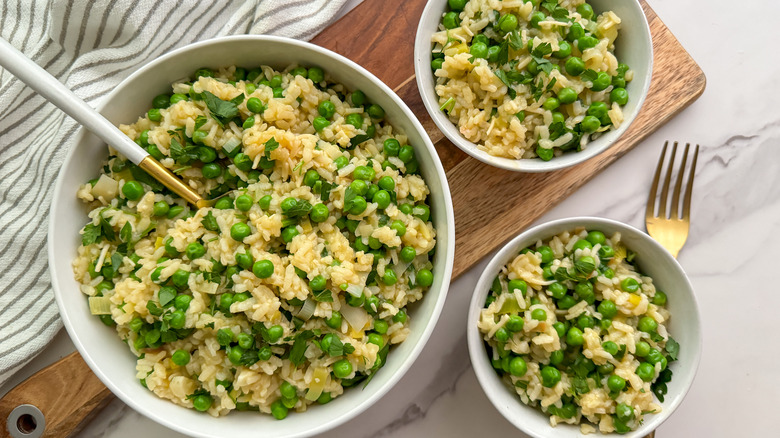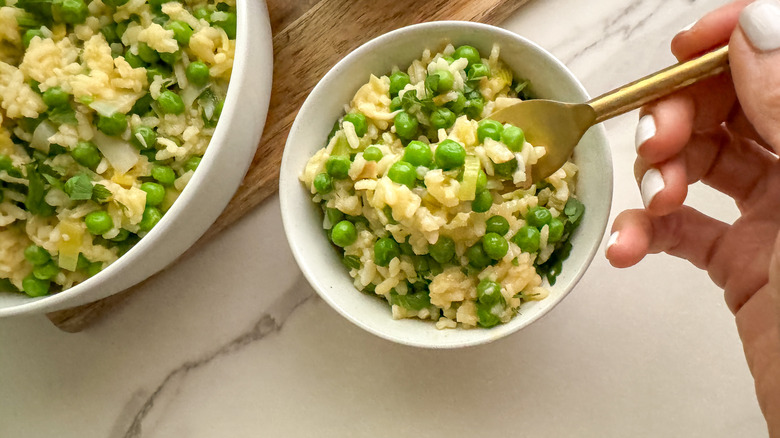Easy Spring Risi E Bisi Recipe
When Italian food pops into your head, you may think of rich and flavorful sauces paired with pasta or pizza, but this delightfully easy spring risi e bisi dish stands apart in its embodiment of fresh and light flavors. Originating from the Veneto region of Italy, risi e bisi translates to "rice and peas" in Italian. Traditionally served during the springtime when peas are in season, this dish holds cultural significance as a celebration of the arrival of warmer weather — and along with it, the abundance of fresh peas and other spring fruits and vegetables.
Wellness coach and recipe developer Miriam Hahn brings us this recipe and says, "Growing up in an Italian family, this was a frequent side dish we served with a variety of entrees, like lemon chicken or seared scallops. I love this easy version of risi e bisi, which is similar to risotto but doesn't have you stirring at the stove for an extended time." Read on to learn how to make this creamy, comforting, and vibrant combination of arborio rice, tender peas, and savory Parmesan cheese.
Gather the ingredients for spring risi e bisi
To shop for this recipe, start in the produce aisle and pick up leeks, garlic, and Italian parsley. "I like using Italian parsley because it has a stronger, more robust flavor than the curly variety, with hints of peppery and citrus notes," Hahn explains. For the peas, you can use fresh ones when they're in season in the spring or opt for frozen, which are just as good since they are flash-frozen at peak freshness.
Next, head to the dry goods area and grab arborio rice, olive oil, and vegetable broth. You'll also need Parmesan cheese for creaminess and salt and pepper for seasoning, which you most likely have on hand.
Step 1: Heat up the broth and water
Add vegetable broth and 3 cups water to a large pot and warm over medium heat for 5 minutes.
Step 2: Add oil to another pot
Add oil to a separate large pot and place over medium heat.
Step 3: Saute the leeks
Add leeks and saute for 5 minutes.
Step 4: Toast the rice and garlic
Add garlic and rice and cook, stirring, to toast the rice, about 3 minutes.
Step 5: Pour in the liquids
Add warmed broth and water mixture to the rice and bring to a boil.
Step 6: Cook the rice
Reduce heat to medium-low, cover, and cook for 10 minutes.
Step 7: Add the peas and seasonings
Add peas, salt, and pepper, and continue cooking, covered, for 10 more minutes.
Step 8: Add cheese and parsley
Stir in the Parmesan and parsley.
Step 9: Finish cooking the rice and peas
Simmer and stir, uncovered, for 5 minutes.
Step 10: Serve the risi e bisi warm
Serve risi e bisi right away.
How do you clean and cut leeks before cooking?
Cleaning and cutting leeks before cooking is essential to remove any dirt or grit that may be trapped between the layers. For cooking purposes, you typically use the white and light green parts of the leek. These parts are tender and have a delicate, onion-like flavor that adds depth to various dishes.
Start by giving the leeks a quick rinse and then cutting off and discarding the root ends. Next, cut off the dark green leaves, which are edible, but too tough to include in risi e bisi. "Since this part is not usable here, I like to combine it with other vegetable scraps in a pot of water and make homemade broth. If you don't plan to make broth, you can discard the green leaves," Hahn shares.
Now that you have the part of the leeks that you'll be using in the recipe, go ahead and slice the leeks in half lengthwise, then slice again so you have 4 long pieces. Chop these batons into smaller pieces and put them into a large bowl filled with water. Swish them around until clean before transferring to a strainer. If there is a lot of dirt in the bowl, repeat this process until the water is clear. While you can always clean your leeks whole, Hahn prefers this method because it's easier than trying to remove the dirt from all those tight leek crevices.
What are the health benefits of rice and peas?
Rice offers several health benefits: It's a rich source of carbohydrates — the body's primary energy source — and helps sustain our energy levels. Additionally, rice is low in fat and contains no cholesterol, making it suitable for heart-healthy diets. It also contains essential minerals like magnesium and selenium, which are important for various bodily functions. Moreover, rice is gluten-free, making it a perfect grain choice for individuals with gluten intolerance or celiac disease.
Peas, too, are nutritional powerhouses. They are rich in dietary fiber, which promotes digestive health and aids in weight management by inducing feelings of fullness. Peas also provide plant-based protein, essential for muscle repair and growth. Additionally, they are packed with vitamins K and C, which are crucial for bone health and immune function, respectively. Peas also contain antioxidants that help combat oxidative stress and inflammation, potentially reducing the risk of chronic diseases.
Easy Spring Risi E Bisi Recipe
Both light and comforting, vegetarian risi e bisi is a northern Italian rice dish celebrating the arrival of fresh spring peas.
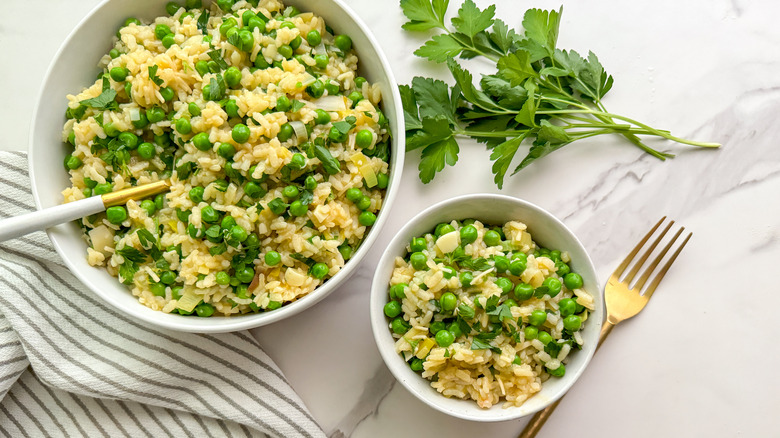
Ingredients
- 4 cups vegetable broth
- 2 tablespoons olive oil
- 2 leeks, dark green tops removed, thinly sliced
- 2 cloves garlic, minced
- 2 cups arborio rice
- 4 cups fresh or frozen peas
- 1 teaspoon salt
- ¼ teaspoon black pepper
- ½ cup grated Parmesan
- ½ cup chopped fresh Italian parsley
Directions
- Add vegetable broth and 3 cups water to a large pot and warm over medium heat for 5 minutes.
- Add oil to a separate large pot and place over medium heat.
- Add leeks and saute for 5 minutes.
- Add garlic and rice and cook, stirring, to toast the rice, about 3 minutes.
- Add warmed broth and water mixture to the rice and bring to a boil.
- Reduce heat to medium-low, cover, and cook for 10 minutes.
- Add peas, salt, and pepper, and continue cooking, covered, for 10 more minutes.
- Stir in the Parmesan and parsley.
- Simmer and stir, uncovered, for 5 minutes.
- Serve risi e bisi right away.
Nutrition
| Calories per Serving | 251 |
| Total Fat | 5.1 g |
| Saturated Fat | 1.6 g |
| Trans Fat | 0.0 g |
| Cholesterol | 5.1 mg |
| Total Carbohydrates | 42.3 g |
| Dietary Fiber | 4.0 g |
| Total Sugars | 3.5 g |
| Sodium | 398.6 mg |
| Protein | 8.5 g |
